Droptests on toothed ascenders for rope access.
|
|
- On the 12th of november, 2014 we conducted a few tests of what
could happen, if different toothed ascenders were subjected to
a fall/shockload.
Below are the results...:
Even though the tests were in no way neither scientific nor conclusive,
we hope, that you will be find them useful.
Notes: We are of course aware, that the tools should always be
used according to manufacturers advice.
In this case, it means that chestascenders should never be subjected
to a shockload, whilst the handled ascenders could be subjected
to certain shockloads, generated by ie smaller falls under certain
circumstances (typically a rope-retaining carabiner in either
the top- or bottomhole of the handled ascender), as specified
by the manufacturer and also shown in the Review on the use of ascenders in rope access.
Specifics for this test:
Rope: Sterling Safety Pro 11,0 mm. static rope.
Ropes were moved/exchanged for each test so that all droptests
were conducted on previously unused ropes.
Droploads in all instances were 50 kg.
Neither of any of the ascenders were attached with a lanyard/cows
tail. Only a carabiner connection was used
Background.
Discussion.
|
|
Falfactor: 0,3 |
Fallfactor 0,5 |
Falfactor: 1 |
|
Filmclips will show, if you click on the results below:
|
Climbing Technology; Handled Ascender.
Carabiner in top hole. |
No damages.
Watch testmovie.
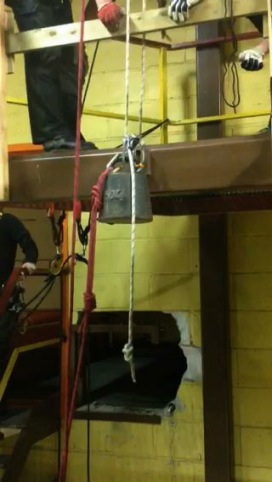
|
No damages.
Watch testmovie.
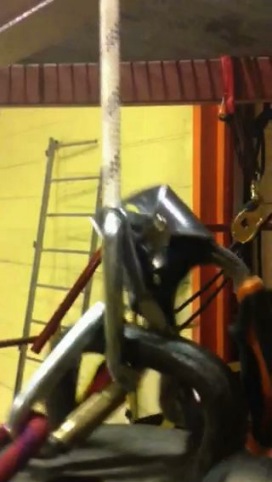
|
A few threads torn in the mantel/sheath.
Watch testmovie.
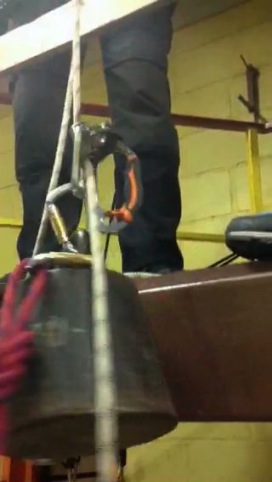
|
| Petzl; Croll. (Old version). |
|
Burnt smell.
Several trheads torn in sheath/mantel.
Watch testmovie.
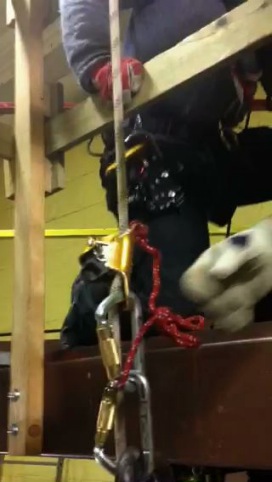
|
Burnt smell.
Sheath completely torn.
Several cordels in the core of the rope quite damaged.
One cordel in the core of the rope completely ripped/torn.
Croll moved down with the torn sheath apprximately 50 centimeters.
Watch testmovie +
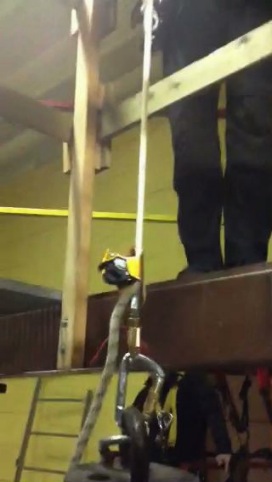
|
Petzl; Ascension.
Carabiner in bottom hole. |
|
|
Burnt smell.
Sheath completely torn.
Several cordels in the core of the rope torn and several others
severely damaged /melted.
Croll moved down with the torn sheath apprximately 150 centimeters
until stopped by the sheath, "stacked" on top of the safety knot
at the end of the rope.
Watch testmovie +
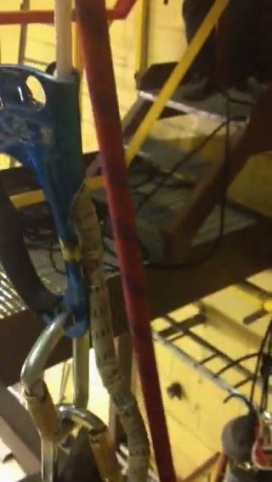
|
Filmclips of the falls will also show, if you click on the pictures
in the scheme above:
|
|
Background:
Toothed ascenders are used excessively in rope access for a number
of purposes.
It is therefore obviously important to know as much as possibly
about their use, limitations and potential dangers.
It has long been known, that most toothed ascenders depend on
contact with the rope through teeth, that primarly are sunk into
the sheath (not the core) of the rope.
The sheath on most ropes is not an integral part of the rope and
instead just a mantel/sock(sheath on the outside of the rope to
protect it from tear and wear etc.
This means that the rope access technician and his ascender is
often times not conected to the actual core of the rope but only
to a part of it (the sheath), which has no known strength characteristics
and which has been known to to be torn when subjected to even
small shockloads.
This is not a problem, when just hanging from the ascender with
bodyweight with no risk of subjecting the ascender (and the sheath
of the rope) to shockload.
If there is a risk of shockload, however, this could be a problem.
Usually a rope access technician uses two ascenders;
- the chestascender which is most often used a primary tool from which the rope access
technician is hanging
and
- the handled ascender which is primarily used as an aid/handle from which a footsling
can be attached.
This is often the case in simple "up and down" rope access. The
chestascender is loaded and in vertical (ascending/descending
up and down the rope.
Usually this is not a problem, because the chestascender would
not risk being subjected to a shockload.
However for more complicated procedures on diagonal or horizantal
ropes this could be a problem, as a failure of one of the systems
might lead to a fall on the ascender when it is not in the vertical
position, resulting in a shockload on it.
The outcome of the shockload will be uncertain, as the ascenders
are obviously not neither constructed suitable nor safe for that
use.
More clarity on the limits on the use of ascenders from different
manufacturers and in different situations would obviously help
us understand our safety better when working in ropes.
Understanding our tools and their will inevitably lead to a safer
work-environment for rope access technicians.
|
Discussion:
The above tests basically confirm what should be common knowledge
in rope access, namely that it can be dangerous to subject toothed
ascenders to even minor shockloads/falls.
It is noteworthy here, that for these tests we only used a 50
kg weight.
Also we did not subject the system to a FallFactor (FF) exceeding
FF 1.
Whilst this may be irrelevant for vertical climbing with a chestascender,
where it is almost impossible to subject the ascender to a fall,
the situation is somewhat different when it comes to a number
of other rope access situations, where the chest-ascender is not
used in the vertical position, eg. during a long or a short rebelay.
See the Review on the use of ascenders in rope access.
In these situations, both the handled ascender and the chestascender
may risk being subjected to shockloads ie. during a pendulum fall.
For these applications to the use of toothed ascenders, it may
be worth conducting further tests to clarify ie:
More research and testing could ie. be done on:
- wether there are differences with ascenders from different manufacturers,
regarding the aggresiveness of the teeth on the ropes.
- wether putting a carabiner in the handled ascender makes it
hold better on non-vertical ropes, as suggested and adviced by
some manufacturers.
- wether a carabiner in the top hole is preferable to a carabiner
in the bottom hole or vice versa in certain situations, as suggested
and adviced by some manufacturers.
The little testing that we did above might indicate all of the
above.
If future tests on this subject lead to clear conscusions, changes
to the Certification Requirements and Evaluator Guidelines etc.
might be needed.
Anyway, ir is our hope that this will help us understand the use
of toothed ascenders better and possible motivate further tests
and motivate further testing. |
|
When: 12th. of november, 2014, 13.00 am - 16.00.
Where: Scan-Rope rope access training facility, Hasslarp, Sweden.
Who:
ScanClimb; Kim Filthuth,
Scan-Rope; Christian Almer.
Cresto, Michael Gullvert
Træservice; Frederik Simon
CEAS: Janus Holm og Peder Pedersen |
Done by:
PRAT® Professional Rope Access Technician Certification Renewal Workshop
and by BARA; Tradeassociation of Authorized Rope Access
www.bara.dk
info@bara.dk
|
|
|
Sincerely
|
|
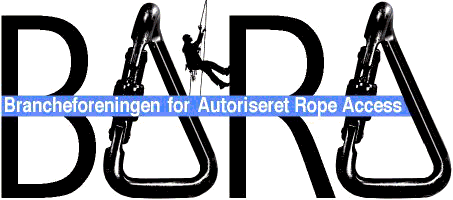
|
|





